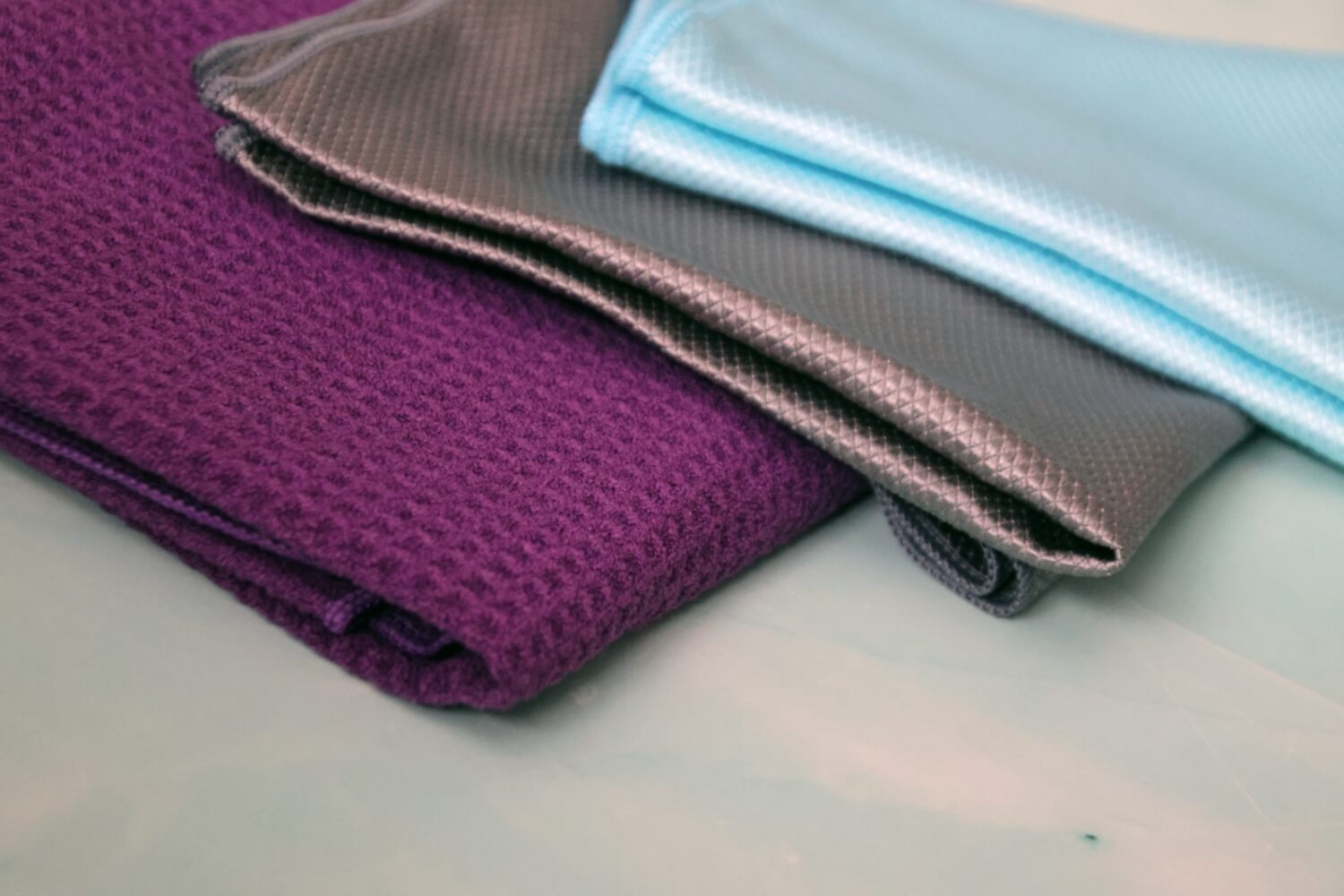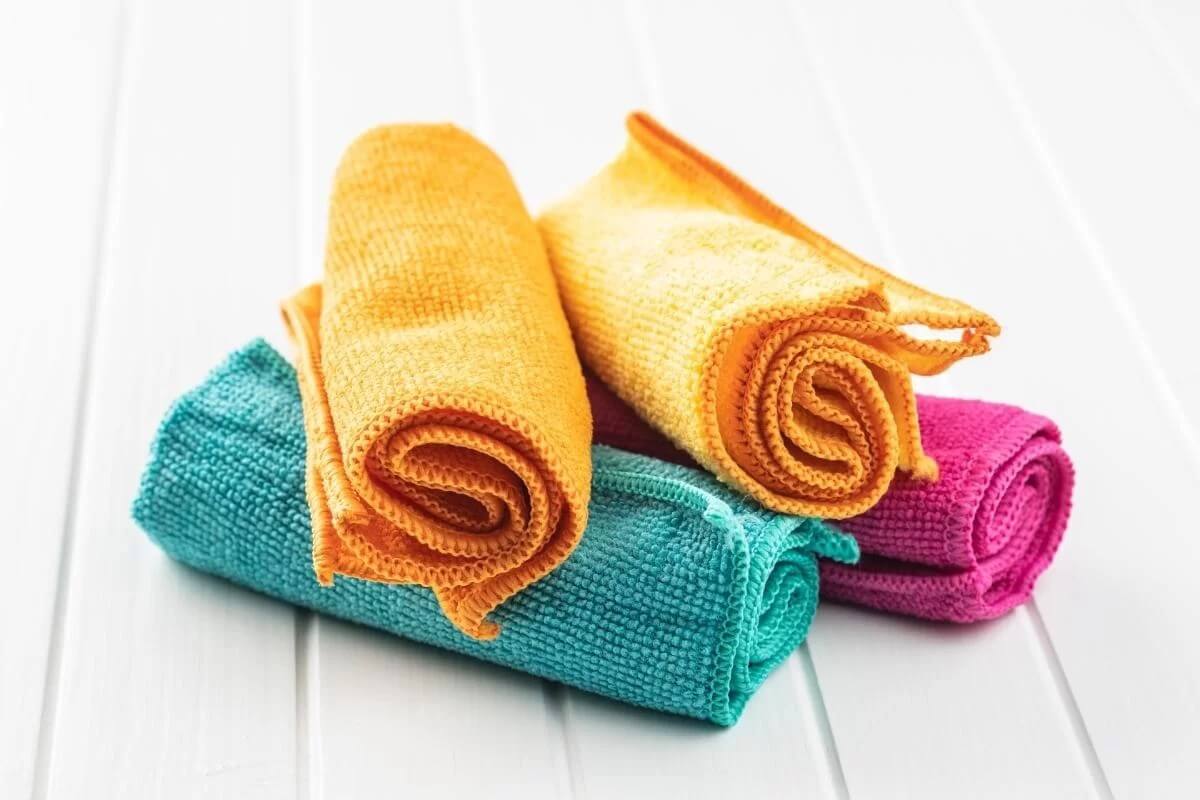Microfiber cloths have conquered the cleaning world, lauded for their versatility, efficiency, and eco-friendliness. Yet, amidst their reign, misconceptions and myths persist, hindering their true potential. Let’s dispel the most common myths and unlock the real cleaning magic of these microfiber marvels!
Key Takeaways
- Microfiber cloths are versatile and can be used for a variety of tasks, including dusting, polishing, and washing dishes. They are also eco-friendly, as you often only need water to clean with them.
- There are many misconceptions about how to care for microfiber cloths. For example, not all microfiber cloths are created equal, and they do not only need water to clean.
- By following the proper care instructions, you can extend the life of your microfiber cloths and get the most out of them. This includes washing them in warm water with gentle detergent and avoiding fabric softener.
Myth 1: One Size (and Density) Fits All
Nope! Just like snowflakes, microfiber cloths differ in density and blend. Aim for high-density cloths (80/20 blend). The 80% polyester offers durability, while the 20% polyamide boosts static cling for superior dust-trapping. Avoid low-density cloths that scratch delicate surfaces like glass or electronics.
Myth 2: Water, Their Holy Grail (Sometimes)
While they excel at capturing dust and light grime with just water, some situations demand reinforcements. Fact: Choose ph-neutral cleaners for greasy messes or disinfecting. Water alone might not tackle bacteria effectively. Use appropriate cleaners to ensure a holistic clean. Consider gentle dish soap for greasy surfaces, vinegar solutions for disinfecting, or glass cleaner for streak-free windows.
While water excels for dust and light grime, explore advanced cleaning techniques and diverse applications in our comprehensive guide: The Ultimate Cleaning Guide: The Benefits of Microfiber Cloths.
Myth 3: Replacing the Cleaning Arsenal (Not Quite)
Microfiber cloths are workhorses, but even they have limitations. For heavy-duty scrubbing, tackling grime buildup in ovens or grills, or disinfecting specific surfaces like toilets, you might need sponges, specialized cleaners, or disinfectants. Think of microfiber cloths as your eco-friendly first line of defense, with other tools available for backup, depending on the cleaning task.
Myth 4: Washing? Never Heard of Her!
Imagine a cloth teeming with trapped dirt and bacteria. Shudder-worthy, right? Wash your microfiber cloths regularly! Follow the manufacturer’s instructions, typically after every few uses. Use warm water (around 140°F) and gentle detergent for both cleaning and disinfection. Remember, clean cloths clean effectively! Avoid fabric softener as it weakens the static cling and reduces their cleaning power.
Want to learn more about the proper way to wash microfiber cloths and extend their lifespan? Check out our Essential Guide to Washing Microfiber Cloths & Towels.
Myth 5: Fabric Softener Makes Microfiber Cloths Softer and Better (Wrong!)
This is a major cleaning no-no! Fabric softener coats the fibers, weakening their static cling and hindering their dust-trapping power. Fact: Stick to detergent only when washing microfiber cloths. Skip the fabric softener and allow them to air dry completely. Heat drying weakens the fibers, reducing their lifespan. Consider hanging them on drying racks or lines for optimal air circulation.
Myth 6: Eternal Life for Your Cloths (Wishful Thinking)
Like any tool, microfiber cloths have a lifespan. With proper care, they can last several months to a year. Watch for signs of wear like fraying, reduced cleaning power, and difficulty absorbing water. Replacing worn-out cloths ensures maximum effectiveness and prevents spreading bacteria. Don’t be tempted to hold onto damaged cloths – invest in fresh ones for optimal cleaning results.
Bonus Myth: A Sea of Specialized Cloths for Every Surface
While specialized cloths for specific surfaces like granite countertops or stainless steel exist, a high-quality, general-purpose cloth handles most tasks effectively. Fact: Microfiber cloths are safe for most surfaces with proper care. Always test on an inconspicuous area first to ensure compatibility. For example, test on the inside of a cabinet door before tackling your entire kitchen countertop.


Master Microfiber, Clean Smarter, Live Greener
Unleash the cleaning power of microfiber and discover how it can transform your home into a sparkling haven of sustainability and wellness.
Organization & Hygiene in Harmony
Ditch confusion and cross-contamination with a colorful solution! Assign different colored cloths to specific areas like bathroom (blue), kitchen (green), and general dusting (yellow). It’s organized, hygienic, and adds a fun splash to your routine!
Ditch Paper, Embrace Crystal Clarity
Say goodbye to wasteful paper towels! Achieve sparkling windows with just two eco-friendly heroes: microfiber cloths and vinegar. The static cling traps dust and grime, while the vinegar cuts through streaks. Sparkling windows, lighter footprint? We love it!
Tackle Tough Messes, Naturally
Forget harsh chemicals and embrace the dream cleaning team: microfiber cloths and steam cleaners! This dynamic duo conquers greasy stovetops, grimy oven doors, and even shower grime. Steam loosens tough messes, while microfiber effortlessly traps and removes them, leaving surfaces clean without chemicals.
Master Specific Challenges:
Appliance Expertise: Learn dedicated methods and solutions for each appliance.
Pet Hair Removal: Banish pesky fur with damp or dry cloths, paired with gloves or a lint roller for maximum results.
Delicate Surface Care: Clean with confidence using dry or damp cloths and gentle solutions. Always test first!
Microfiber is more than just clean surfaces, it’s a green choice
Reduced Chemical Reliance: Breathe easy and ditch harsh chemicals that harm your health and the environment. Microfiber tackles dirt effectively with just water or mild solutions.
Reusable & Durable: Say goodbye to wasteful paper towels! Microfiber cloths are reusable for months, significantly reducing landfill waste and minimizing your environmental footprint.
Water Conservation: Every drop counts! Microfiber requires less water for cleaning and washing, conserving this precious resource.
To learn more about our commitment to sustainability and OEKO-TEX certification, head over to our informative guide OEKO-TEX: Your Guide to Safe and Sustainable Textiles. This certification ensures our cloths meet strict safety and environmental standards, providing peace of mind for you and the planet.
FAQ
How do you select a high-quality microfiber cloth?
Quality is crucial when choosing microfiber cloths. Look for cloths with a blend of 80 percent polyester to 20 percent polyamide for the best cleaning efficacy. Higher-quality cloths often have smaller fibers, which are more effective at trapping dirt, bacteria, and even viruses. The density of the cloth, measured in GSM (grams per square meter), and the type of weave (loop or waffle) also play significant roles in the cloth’s effectiveness for different cleaning tasks.
What are the best uses for microfiber cloths?
Microfiber cloths are incredibly versatile and can be used on a wide range of surfaces, including appliances, glass, countertops, furniture, and floors. They are known for their ability to clean effectively without leaving lint, scratches, or streaks, and can be used wet or dry, with or without cleansers.
How should you wash microfiber cloths?
Proper care extends the life of microfiber cloths. They can be machine washed but should be separated from other laundry to prevent lint transfer and should not be washed with fabric softener, as it can clog the fibers and reduce their effectiveness. Depending on the quality, microfiber cloths can last for hundreds of washes.
Are there specialized microfiber cloths for specific cleaning tasks?
Yes, there are microfiber cloths designed for specific tasks, such as cleaning cars, electronics, kitchens, and even glasses. Each type has features suited to its intended use, like size, absorbency, and fiber length. For example, cloths designed for automotive cleaning might have dual-sided fibers and silk edging to prevent scratches, while those for electronics are smaller and made to remove fingerprints and smudges without leaving lint or streaks.
What are some tips for using microfiber cloths effectively?
To get the most out of microfiber cloths, use them according to their intended purpose and care instructions. For tough cleaning tasks, choose cloths with a higher GSM and a weave suitable for the job. Remember to wash them correctly to maintain their cleaning abilities and to replace them when they show signs of wear.